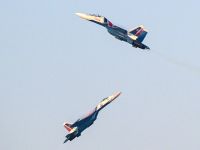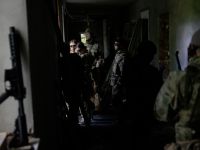ISIS is taking advantage of Iraq's preoccupation with the coronavirus pandemic and the turbulent political upheaval to stage a strong comeback.
Last April 21, the Iraqi Joint Operations Command said in a statement that the Iraqi security forces conducted 1,060 anti-ISIS operations, during which a total of 135 ISIS militants were killed.
It said that up to 88 security members and 82 civilians were also killed by the militants during the same period.
According to official statistics, the terrorist group has maintained a considerable capacity in launching attacks on Iraqi security forces.
The statistics were conducted during the period from Jan. 1 to April 15, which means that ISIS operations have probably increased lately, particularly following the series of attacks on areas in the provinces of Salaheddine, Kirkuk, Diyala, and Nineveh, where tens of soldiers were killed.
Field information shows that ISIS is still capable to move in a vast area of operations.
Local observers agree on the reasons behind ISIS’ comeback in Iraq during the past months and weeks.
They said the militant group’s comeback benefited from the Iraqi turbulent political upheaval and the authorities’ preoccupation with the coronavirus pandemic.
A spokesman for the Salaheddine tribes, Marwan al-Jabara,said that several reasons were behind ISIS’ resurgence in several Iraqi provinces, particularly in the Salaheddine province.
“Surely, ISIS benefited from the authorities’ preoccupation with the COVID-19 pandemic. However, there is a dangerous lack of coordination between the leaderships of the Iraqi operation command. ISIS often takes advantage of this gap to launch attacks in deserted areas,” Jabara said.
The spokesman said the militia group is trying to catch its breath in the country.
“ISIS is operating in an area including five provinces and stretching from the Iranian borders in the east to the Syrian borders in the west, a zone of forests, valleys and farms,” said Jabara.
He said that ISIS’ comeback in Iraq was also possible because the Iraqi forces failed to completely clear Huweija after the expulsion of ISIS from the area in 2017.
This article has been adapted from its original source.








